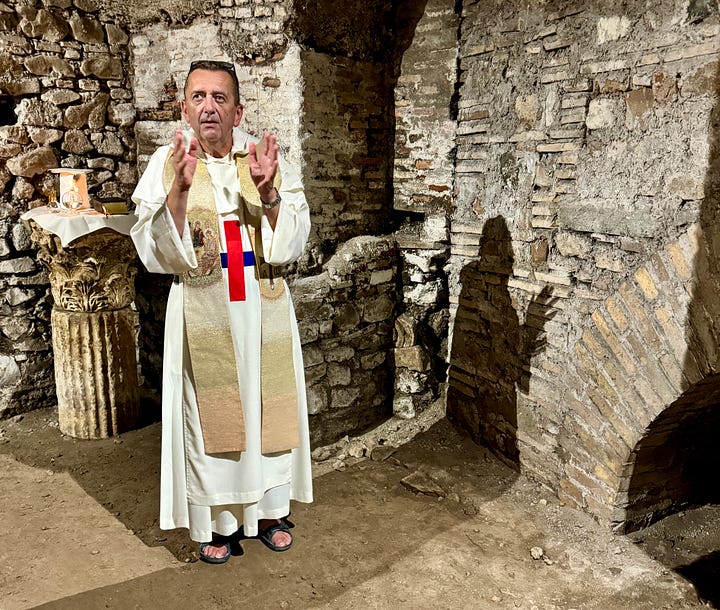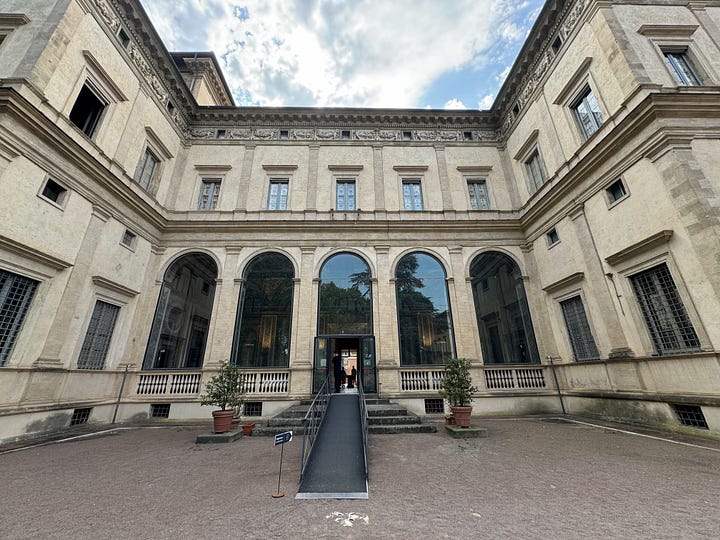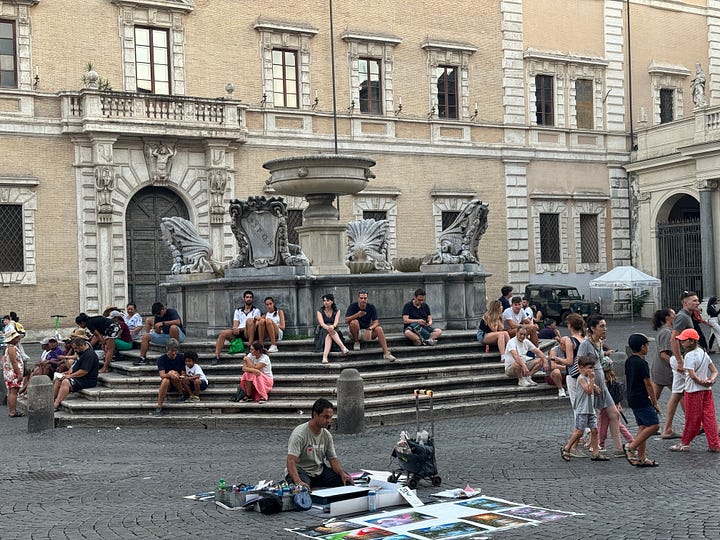What Does ‘Travel’ Look Like as We Age?
Like everything else our ideas about why and how we sojourn is changing. Our now underway trip to Italy is a case in point.




Our conversation with J and W followed an understandable arc. It was, after all, the eve of our six-week trip to Italy. Like us, J and W, a seventy-something couple, are widely traveled. In fact, five minutes before they joined us for appetizers and aperol spritzes they had just finalized reservations for a Scandinavian cruise.
As we traded travel plans, W started to get pensive. “We’ve been talking about the way we travel—I mean, what does it look like now that we’re getting older?”
Without quite realizing it, W’s question also went to heart of our Italy trip. Our travel is looking differently, in fact. And here’s the difference between then and now: We used to be fine with jumping from destination to destination, packing our suitcases after two or three days in one hotel after another as we took in the sites of one, two, three, or more destinations.
Not anymore.
The Beloved1 and I want to head out, settle down, and go deep into a particular place. Call it getting hyper-local. Now that we’re retired, we can travel longer and more slowly, walking rather than catching buses, taxis, or subways hither and yon.
As I write this, yes, we’re in Italy. Yes, we’re in Rome. But for 10 days, we’re in one of the city’s 14 districts, namely Trastevere, (pronounced Tras-tev-ver-ray) across the Tiber River from Rome’s Centro Historico, home to the Coliseum, the Forum, and the Pantheon. We’ve seen them all — me twice, the Beloved1 dozens of times.
This trip marks my fourth to Italy, to which I owe a quarter of my genetic makeup. (My grandmother immigrated from Rome’s Lazio region and, because of her, I’m especially fond of Italy’s culture and cuisine.) I’ve been to Milan, Florence, Tuscany, Venice, Pisa, Como, Lucca, to name a few — that is, most of the nation’s mainstays.
Our deep dive into Trastevere — its name literally translates as “across the Tiber” — began with a food tasting and walking tour from Rosy Smart City Tours. As luck would have it, we were the only two who signed up for that particular evening — so private tour it was.
We’ve taken walking tours elsewhere — Venice is one place — and they are one of the very best ways to see and understand the lay of the land, the earlier in the trip the better. Within days, Trastevere became familiar to us. We never felt lost, one advantage, as we walked, walked, walked, another plus.
In late August, Rome is still full of tourists, even though the Romans themselves skedaddle the city for their monthlong Ferragosto holiday. Many of tourists are American students attending Catholic, John Cabot, and American University campuses in the neighborhood. We try to avoid tourist spots, but it’s hard with so many excited kids spiriting about, and their adventure energy was palpable.
Our dig, so to speak, took us to at least two relatively tourist-free restaurants, where we enjoyed dishes beyond pasta Amatraciana, Carbonara, and Cacio e Pepe, all classically Roman dishes served everywhere. One we stumbled into when the restaurant we wanted was closed. It was Cuverie, a tiny enoteca (wine bar) where owners Monica and Marco served up bacala (dried cod) in a white cream sauce atop a round of polenta. One of my most memorable meals, ever.
Our traipse through Trastevere also bestowed on us a blessing, quite literally. We happened by chance — think serendipity — into the Basilica San Crisogono, which wasn’t on The Roman Guy blog guide we’d been using. A priest there took us under his wing and gave us a private tour and a private Mass below the church amid of the ruins of an old Roman house where persecuted Christians started meeting and then built one of Rome’s first parish churches nearly 1,700 years ago.
During the Mass, the connection I felt with my Italian, Christian, and Catholic roots made me weep for reasons I can’t adequately articulate yet. I know one thing, however: It made our hyper-local travel strategy entirely worthwhile.
Recommended places we visited to sightsee and to dine:
Villa Farnesina. Suburban Renaissance palace of a papal enriched banker. Ornate beyond belief. Feast for the eyes.
Piazza Santa Maria in Trastevere and Piazza Trilussa. Main squares. Basilica Santa Maria in its eponymously named square there is a must-see. Piazza Trilussa is home to many buskers and other street performers. One night we heard an electric guitarist ripping Led Zeppelin’s “Starway to Heaven.”
Una Hotel and Trilussa Palace Hotel. Both in Trastevere with great rooftop vistas of Rome.
Miraggio Ristorante Pizzeria. Across from Villa Farnesina. Less tourista, more local. Real Rome. Recommended by The Roman Guy. Not refined but the spaghetti with mussels I had for lunch satisfied my craving well enough.





